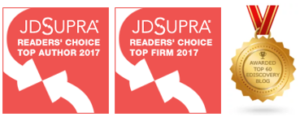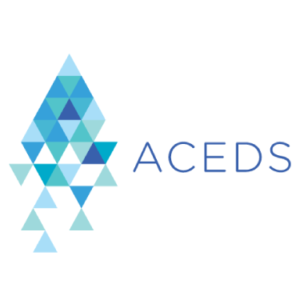ALSP – Not Just Your Daddy’s LPO, Part Three: eDiscovery Trends
Editor’s Note: Tom O’Connor is a nationally known consultant, speaker, and writer in the field of computerized litigation support systems. He has also been a great addition to our webinar program, participating with me on several recent webinars. Tom also wrote a terrific four part informational overview on Europe’s General Data Protection Regulation (GDPR) titled eDiscovery and the GDPR: Ready or Not, Here it Comes (and participated with me on a webcast on the same topic) and wrote another terrific five part informational overview on Understanding eDiscovery in Criminal Cases. Now, Tom has written another terrific overview regarding Alternative Legal Service Providers titled ALSP – Not Just Your Daddy’s LPO that we’re happy to share on the eDiscovery Daily blog. Enjoy! – Doug
Tom’s overview is split into four parts, so we’ll cover each part separately. We covered part one last Thursday and part two on Monday. Here’s part three.
Who is actually using an ALSP? And, why are they using them?
Who is actually using an ALSP? And what is the specific breakdown of these services? The Thomson Reuters Legal Executive Institute report shows that more than half of law firms and corporations are already using ALSPs with 51 percent of law firms and 60 percent of law departments already using ALSPs in at least one service category.
John Munro, Vice President of National Markets at Blackstone Discovery, was a panelist at a Legaltech New York session discussing the ALSP market. He noted that traditional document review work was once 75 percent of the LPO market but now may be no more than 30 percent of the ALSP market. More and more, ALSPs are playing a bigger role in providing legal services.
Law departments seem to be using ALSPs in specialized areas ranging from regulatory risk & compliance services to specialized legal advice for IP managers and legal researchers.
Law firms however are most likely to use ALSPs for litigation support, especially eDiscovery, document review and pre-litigation investigation.
In a January press release, report co-author Mari Sako, Professor of Management Studies at Saïd Business School shared that:
“ALSPs are not just about lower cost, but also about access to specialized expertise and alternative modes of delivery.”
But why?
ALSPs were originally seen as a good outsourcing choice simply because of affordability in handling tasks without billing out to an attorney. In 2005, it was purely about the cost savings and the labor arbitrage. And according to the Thomson Reuters report that still seems to be the case when it comes to tasks such as document review. 85 percent of law firms who use ALSPs said they do so in document review for cost savings and 52 percent said they use them to meet peak document review demand without increasing headcount.
While cost savings still remains a driver, the report confirms how ALSPs today are disaggregating legal processes, that is to say they are providing legal expertise not always available in-house and helping enable greater use of current technology.
Outside of document review though, the need for expertise is increasingly a key factor in selecting an ALSP. About two-thirds of law firms reported using litigation and investigation support services ALSPs and said their primary reason was the need for access to specialized expertise not available in-house; only one-third cited cost savings as a main factor. A good example of this expertise is Attorney Kelly Twigger and her company, ESI Attorneys. She routinely engages as the eDiscovery expert for law firms and corporate clients because she can provide a depth of ESI experience which they simply cannot bring to the table.
In selecting a non-legal task ALSPs, the percentages were close to the same: 63 percent (expertise driven) and 38 percent (cost-driven), respectively.
For in-house counsel, the four most often selected types of ALSP services beyond eDiscovery and document review were regulatory risk and compliance services, specialized legal services, intellectual property management, and legal research services. The primary reason for selection of these services was access to specialized expertise not available in-house and the difference between this reason and cost was even more pronounced then with private firms, at 77 percent for expertise while only 27 percent for cost savings.
In a statement to Legaltech News during the Legaltech conference in New York earlier this year, Eric Laughlin, Managing Director of Legal Services at Thomson Reuters, noted that
“Having matured in their offerings a little bit, these alternative legal service providers are differentiating based on expertise. And that makes corporations more and more comfortable to reach out to them and use them.”
In addition to expertise, an ALSP can do a much higher volume of work than can the average law firm or legal department. For example, an ALSP specializing in eDiscovery may simply have many more tools and much more robust workflow processes for extracting electronic evidence from terabytes of ESI than any firm or GC office.
This higher volume capability allows their expertise to be applied in a manner that is not only faster but less costly. The result is that law firms now see that subcontracting services to an ALSP can allow them to focus more on their own core competencies. And corporations which have become more focused on reducing outside legal spend see that using a specialized ALSP rather than a law firm may better serve that purpose.
We’ll publish the final part, Part Four – What does this mean for the future of ALSPs? – next Tuesday.
So, what do you think? Have you used an ALSP before? And, as always, please share any comments you might have or if you’d like to know more about a particular topic.

Sponsor: This blog is sponsored by CloudNine, which is a data and legal discovery technology company with proven expertise in simplifying and automating the discovery of data for audits, investigations, and litigation. Used by legal and business customers worldwide including more than 50 of the top 250 Am Law firms and many of the world’s leading corporations, CloudNine’s eDiscovery automation software and services help customers gain insight and intelligence on electronic data.
Disclaimer: The views represented herein are exclusively the views of the author, and do not necessarily represent the views held by CloudNine. eDiscovery Daily is made available by CloudNine solely for educational purposes to provide general information about general eDiscovery principles and not to provide specific legal advice applicable to any particular circumstance. eDiscovery Daily should not be used as a substitute for competent legal advice from a lawyer you have retained and who has agreed to represent you.







